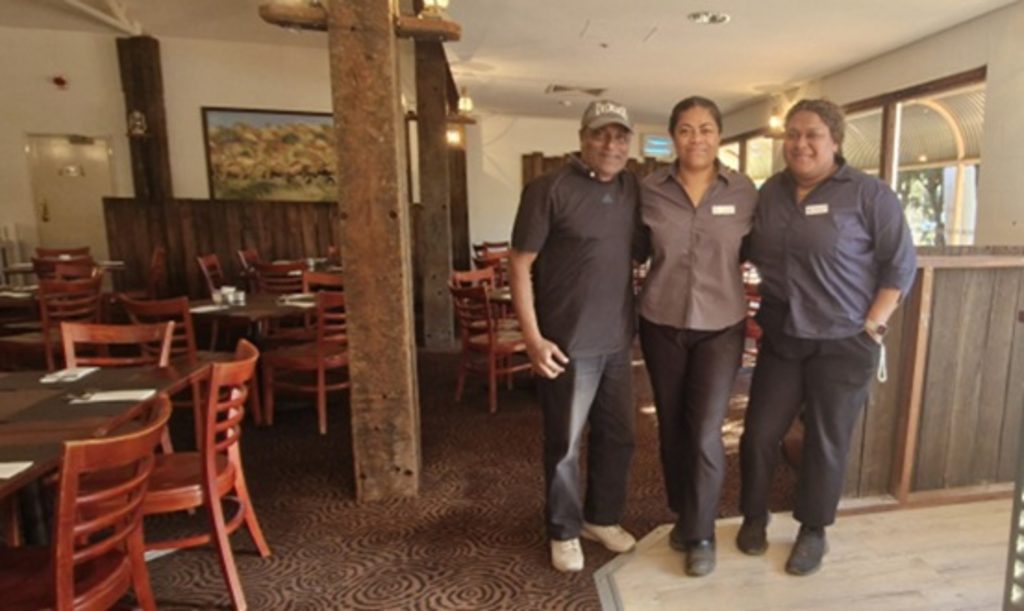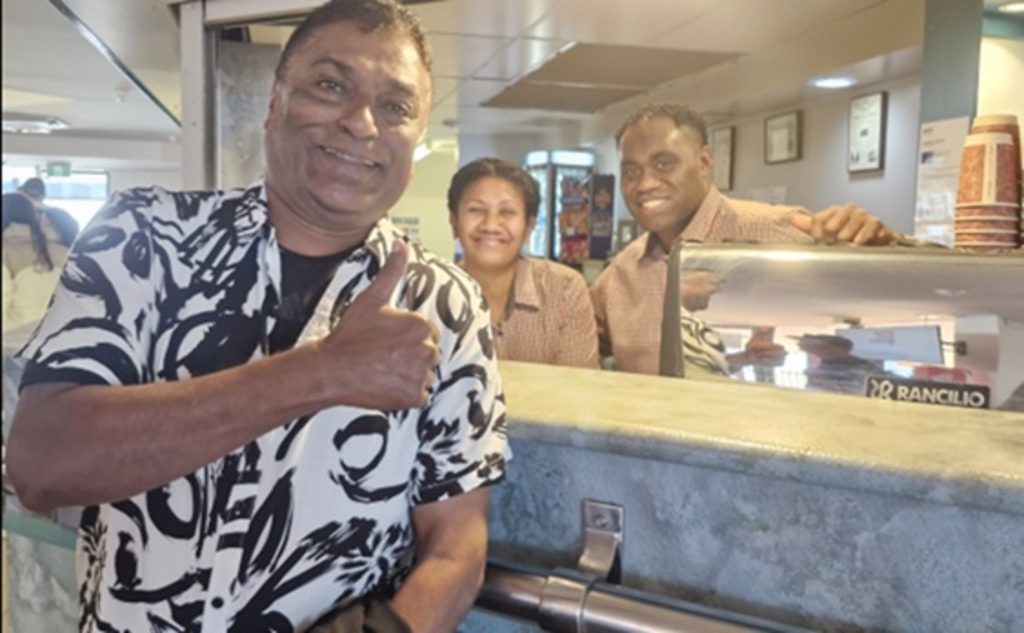Last week, we moved our discussions on pre-colonial Fijian history to the end of the 1850s when Ma’afu had begun to provide an effective counter to Cakobau’s aspirations for dominion over Fiji. I was all excited to continue with what followed, but PM Rabuka threw a flag into the works by referring to our PALM workers as “an embarrassment” in one of his increasingly inconsistent public pronouncements. I wish to, therefore, take this opportunity to share with you my recent trip to Queensland and Northern Territory and my encounter with Australian Aboriginals as well as our own people who have ventured to that far part of Australia to offer their labour.
Fiji Airways and Cairns
FIJI Airways has for a long time been punching above its weight in the aviation sector. It has won a string of international awards that would make it the envy of competitors as well as naysayers. Most recently, it won the prestigious 2026 International Flight Services Association (IFSA) Award for Best Inflight Food or Beverage for its Pacific Rim Cuisine. One of the strategies being used by this comparatively small yet sprightly international airline has focused on diversifying its international routes while forging key alliances with influential international partners.
It is through this that it launched its flights to both Cairns (Australia) and Dallas (Texas, USA) in April 2025. The Dallas part of the deal was both ambitious as well as carefully crafted because it aimed to cut travelling time significantly between Australia and that part of the US. It also allowed Fiji Airways to link up its well appreciated Tabua Membership with the bigger and more prestigious Oneworld membership and AAdvantage travel rewards program. Existing members were able to make the switch seamlessly. As part of the launching of this new route, Fiji Airways offered attractively discounted tickets, and this is what took me to Northern Queensland.
Cairns
The flight to Cairns was filled with the usual excitement. We had excellent “Bula Service” aboard and arrived at around midday on September 6. We stayed in Cairns for two days as the flight to Uluru was two days away. Cairns was just like any tropical country by day but below 10 at nights. There were mango trees on the way to the town centre and we helped ourselves to green mangoes that were falling all over the place because of sudden gusts of wind and rain. That was the perfect chutney for the rice, sausage and noodle meals that comprised our dinners.
I had noticed my first large groups of Aboriginals on the Uber drive from Cairns Airport to our accommodation and made up my mind to try for a meet and greet with these mysterious people who had been hounded all their lives in their own land by the advent of “civilisation”. It rained on our second day there, so we did not encounter anyone at the local park but there were some peripheral looking individuals around the Cairns Central shopping plaza.
The next day, the weather changed and as we tried to kill time, given that the checkout from our accommodation was 11am and our Jetstar flight to Melbourne was at 9.30pm, we came across a whole family at the local park. Like any people encountering unexpected strangers, I could sense that they closed up and were very much wary of this stranger and his Asian-looking partner. I smiled, got down and politely did a cobo as I asked if I could present them with a gift. Their “leader” who was both older and sat on a wheelchair, indicated to me that it was okay.
I then presented them with two half-kg packs of yaqona. There was a small buzz of excitement that sub
sided abruptly when the leader asked, “strong?”. I said, “yes” and then it became all good. There were young adults, small children and babies. The old man was clearly their “head of family”. They came to the park to have family time. Yesterday, the weather kept them away. I told them that we were from Fiji, but there was no real comprehension as I guess Fiji does not feature in their lives. They had two cartons of Jim Beam and Cola to spike up the day and a few were already into it, but I politely turned down their magnanimous offer. We parted with the promise that I would see them again after returning from Uluru. They appeared to be impressed that we were going there.
Alice Springs
There were a number of ways to get to Uluru from Cairns. We could have driven but the distances are forbidding (2412.5km) and the possibility of having a car breakdown in the middle of nowhere was simply too daunting. We decided to take the cheapest flight and ended up flying Jetstar to Melbourne, then to Uluru. The stopover in Melbourne was eight hours overnight which we spent at the airport with no real discomfort. I was all too familiar with this as I used to do the same whenever I had to travel over to Swinburne University when I was doing my PhD there.
Anyway, we then got onto the next leg of the flight and arrived at Ayers Rock Airport at around midday on September 9. We had decided to also include Alice Springs in our trip, so from Uluru we took a rental car to Alice Springs. That drive is also formidable (468km) but there is so much to see and marvel at. The terrain is dry but there is vegetation, trees, scrubs and animals as seen in the road kills (Kangaroo, Cattle, Wallaby) — the maximum speed limit is 130! We also saw some cattle ranches that seemed to be working on sparse vegetation.
Alice Springs is a big town where one finds Aboriginals in significant numbers. One could even say that it is an Aboriginal Town. The traditional owners of Alice Springs and its surrounds are the Arrernte people, who first settled the land thousands of years ago. We were fortunate to meet a local stalwart, Bungie of Old Timers Traeger Museum, who shared so many stories, experiences and insights about Alice Springs. It was a distant outpost town that was first supplied by camel caravans. Then the railways came over followed by the famous Ghan Train and things became a bit easier. Known as Stuart since its inception, Alice Springs acquired its new and permanent name in 1933.
Alice Springs is in reptile territory and there is a Reptile Centre where we managed to exorcise our fear of snakes and reptiles – Ophidiophobia and Herpetophobia. To say that these creatures are fascinating is simply too inadequate. They are magnificent, mystical, amazing, beautiful, fascinating, prohibitively dangerous, deadly, etc. They are absolutely mesmerising! And I come from snake country, Taveuni, so, I should know.
Travellers through Australia and New Zealand will know that there are many memorials to the contribution of the two countries in wars that happened in faraway lands. Alice Springs has Anzac Hill which is a memorial dedicated to Australians who served in WWI. The 15-minute walk uphill has monuments of many other wars where the Aussies made sacrifices. The Hill itself is 608 metres high and is the most popular landmark in town, offering panoramic views stretching all the way out to the MacDonnell Ranges.
On a more practical level, the town has all the modern facilities expected in a developed commercial centre. We spent interesting times at the aptly named Yeperenye Shopping Centre. Yeperenye is a sacred totemic ancestral being for the Arrernte people. I found it interesting that many
of these characteristically shy people actually looked at me as I walked past until they could make out that I was not really one of them. This made me muse about the fact that people anywhere are often instinctively wary of foreigners and quietly look for commonalities before attempts are made to build cross-cultural connections that then firm up to become bridges. More was to come as our next stop was the Sacred Rock.
Uluru (Ayers Rock)
The only time we had talked about Ayers Rock was when the world was gripped in the intrigue surrounding the Lindy Chamberlain case in 1980. In that case, nine-week old Azaria Chamberlain was apparently taken from the family tent by a dingo and her mother was convicted for it — you can read the rest online. Anyway, I only found out much later that the real name of this mystical, iconic and sacred rock was Uluru. I guess this is what colonisation does because it doesn’t really have time for local niceties — empire beckons!
Uluru is one of Australia’s most recognisable natural landmarks and is a popular tourist destination. It is sacred to the Pitjantjatjara, the Aboriginal people of the area, known as the Anangu. There is another equally mesmerising mountain near it called the Kata Tjuta. I must say that nothing we had heard about this sacred mountain did justice to the actual experience of seeing it interacting with the rising sun and changing colours right before your eyes. That is a sight to behold and an experience of a lifetime.
We noticed lots of Japanese tourists around us near the mountain and it dawned on me that during the heyday of the Japanese economy in the late 1980s, lots of Japanese investment flowed into the cattle industry in Northern Queensland. We were to later meet a family in Port Douglas who were pleasantly surprised when I established connections with them in Japanese. Coming back to Uluru, on the day we arrived, as we moved our bags into our room, we were absolutely stumped to hear two staff chatting to each other in Fijian — “ours, I exclaimed”.
Fijian workers
So I shouted, “bula”. And lo and behold, we had two of ours right there. Esita (Yasawa) and her friend from Sawaieke (Gau). After that, we knew we were at home. In the dining room, we met Bulou (Kadavu) and Makelesi (Nadroga). They were there on the PALM program, and it was obvious they were an integral part of tourism in Uluru. In total there are 127 of our people in that part of tourism. That bula spirit, the ready smile, the warmth; they were there in Uluru.
There was more to come. On our way out, we met Meli (Namosi) and Joana (Lovonivonu, Taveuni). This last one was one of mine. We chatted about Taveuni and compared notes. They were working in catering at the Ayers Rock Airport. There was another guy who was in ground handling. There was no doubt that our people were virtually carrying Uluru tourism on their Fijian shoulders. No cause for embarrassment there. In fact, I was so proud to be Fijian in that remote part of Australia because our Fijian people are unique — there is nothing like our Bula Spirit.
We will get back to how we arrived at the Deed of Cession next week.
n DR SUBHASH APPANNA is a senior USP academic who has been writing regularly on issues of historical and national significance. The views expressed here are his alone and not necessarily shared by this newspaper or his employers subhash.appana@usp.ac.fj



